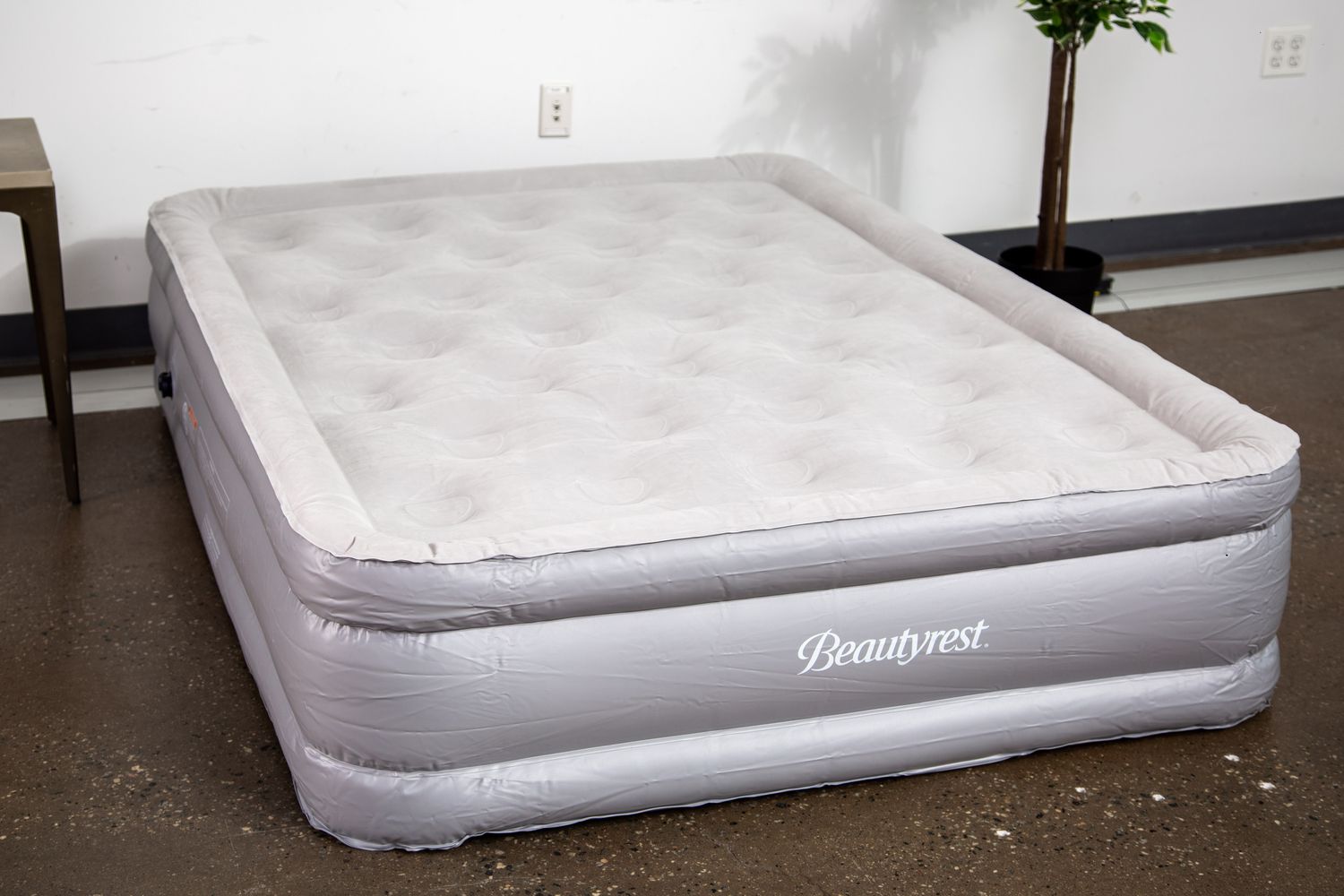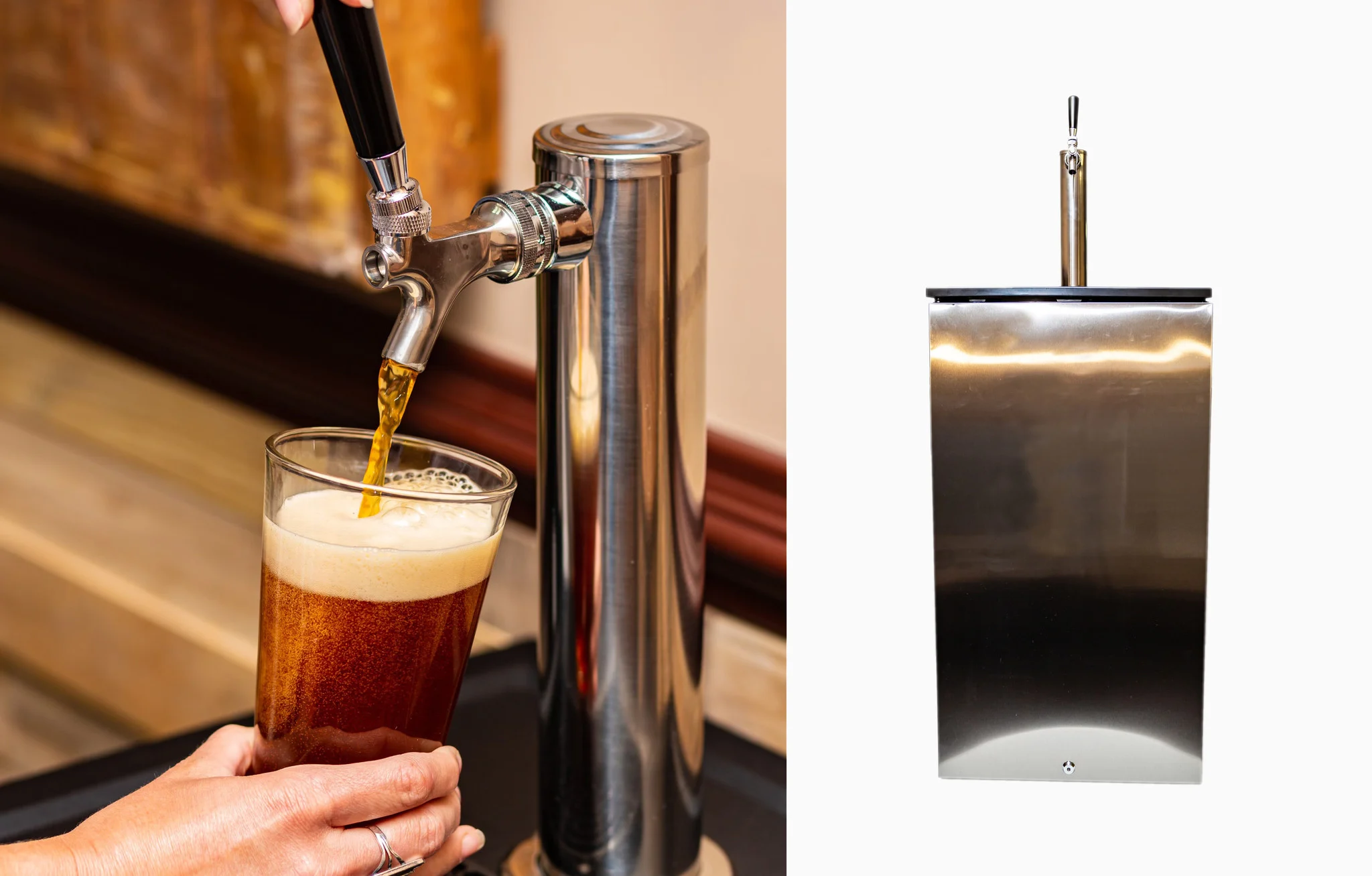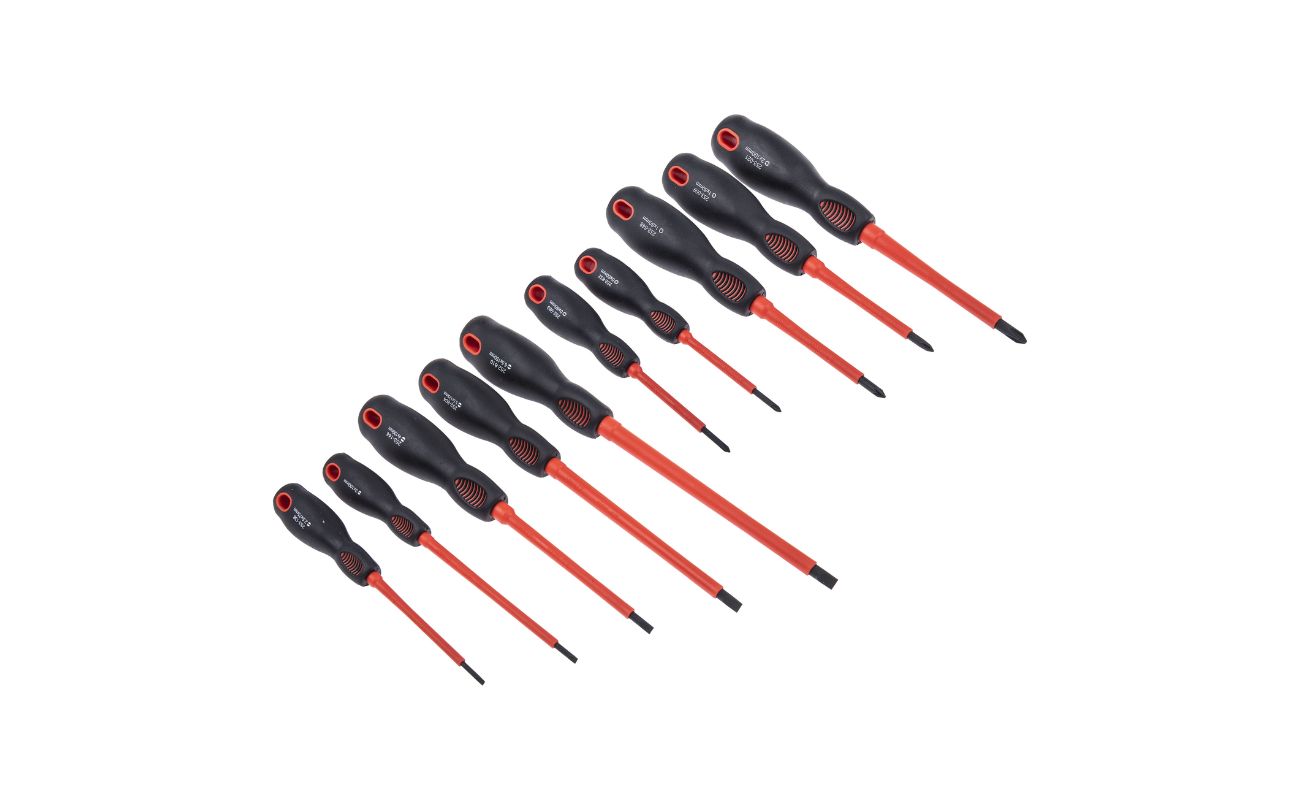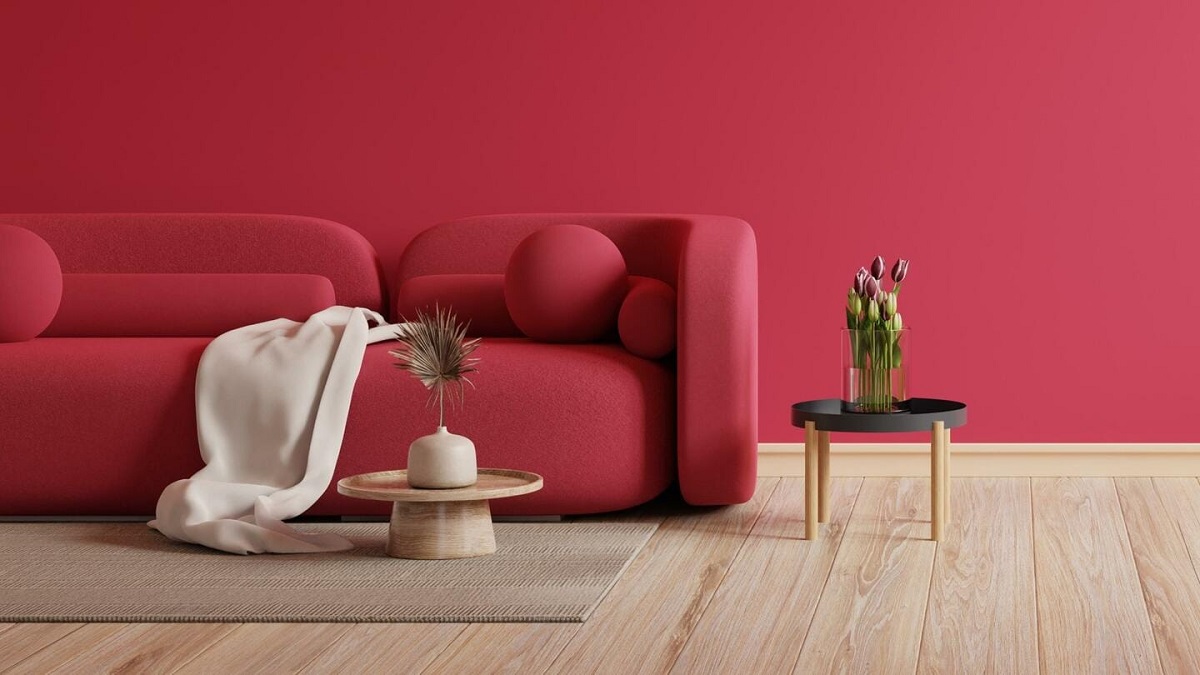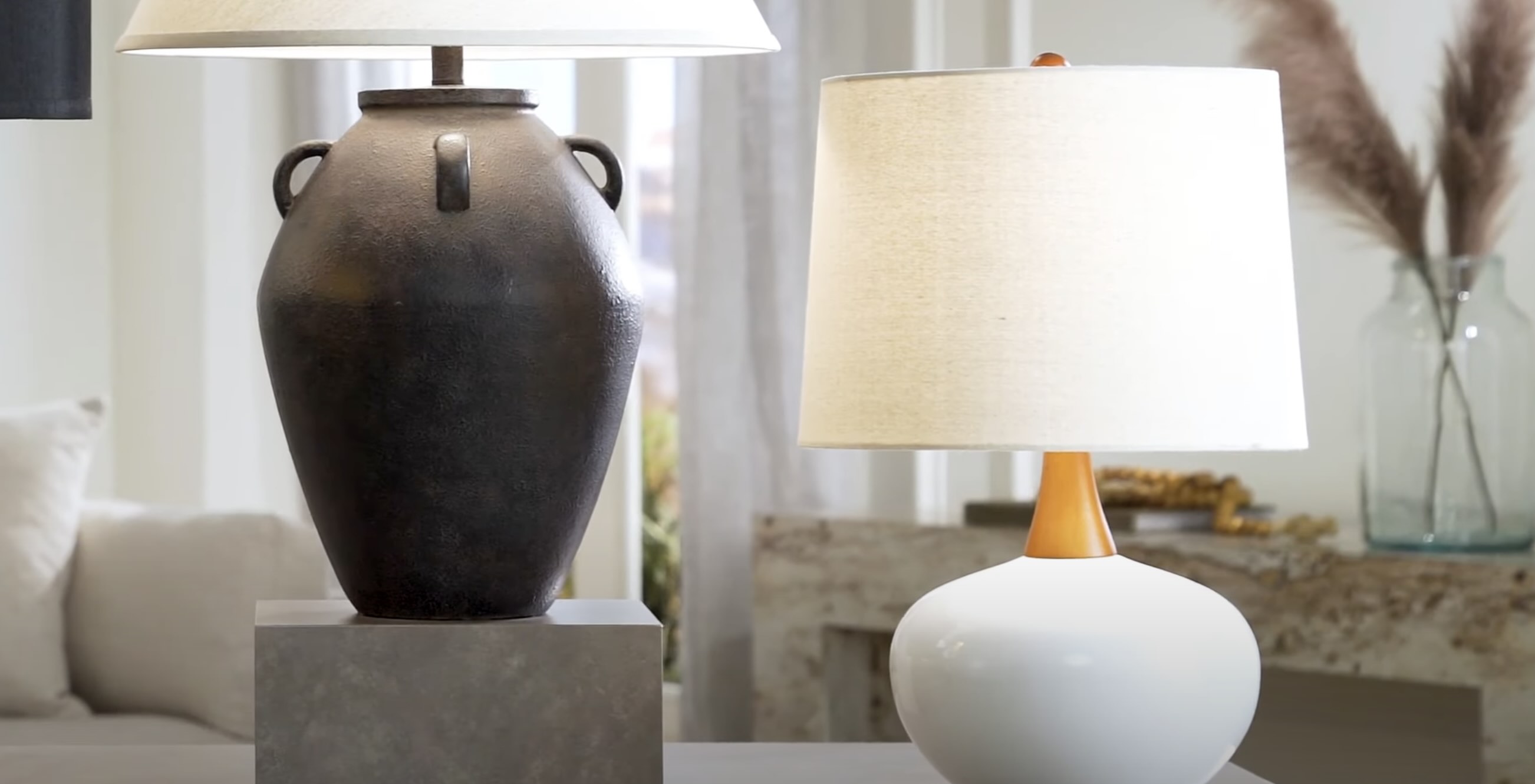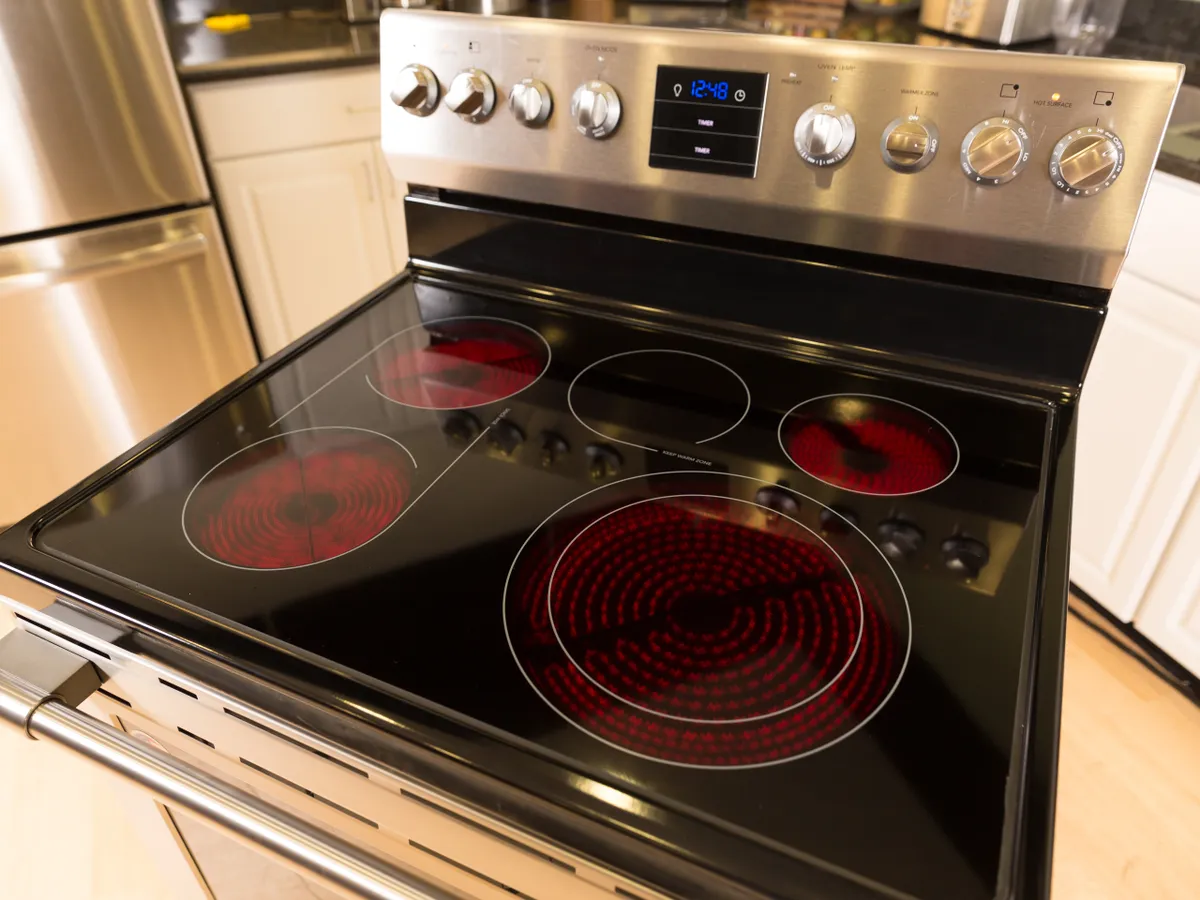Home>Furniture>Bedroom Furniture>How To Know What Mattress Is Right For You
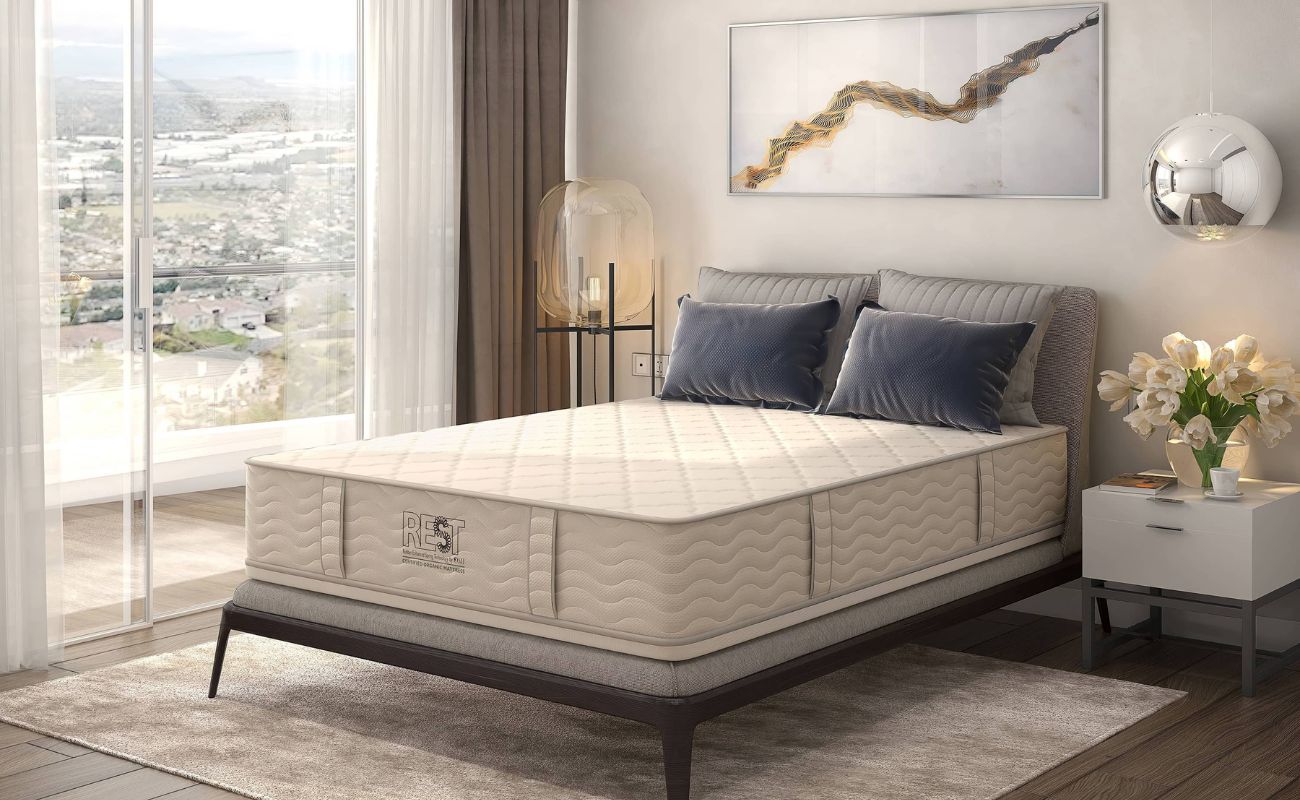

Bedroom Furniture
How To Know What Mattress Is Right For You
Modified: August 28, 2024
Discover the perfect mattress for your bedroom furniture with our comprehensive guide. Find out how to choose the right mattress that suits your needs and ensures a good night's sleep.
(Many of the links in this article redirect to a specific reviewed product. Your purchase of these products through affiliate links helps to generate commission for Storables.com, at no extra cost. Learn more)
Introduction
When it comes to getting a good night’s sleep, choosing the right mattress is essential. Your mattress plays a significant role in ensuring your comfort and support throughout the night, ultimately affecting your overall health and well-being. With the wide variety of mattresses available in the market, it can be challenging to determine which one is the best fit for you.
In this article, we will explore the factors you should consider when selecting a mattress. Whether you’re a side sleeper, have a specific body type, or prefer a certain level of firmness, we’ll guide you on making an informed decision. Additionally, we’ll delve into different mattress types, cooling features, motion isolation, support and alignment, durability, price range, trial periods, and warranties.
Understanding these key factors will enable you to choose a mattress that meets your specific needs, providing you with the best chance of enjoying a restful and rejuvenating night’s sleep.
Key Takeaways:
- Choosing the right mattress involves considering factors such as sleeping position, body type, firmness preference, and mattress type. Understanding these elements ensures optimal support and comfort for a restful night’s sleep.
- Features like cooling properties, motion isolation, support and alignment, durability, price range, trial period, and warranty play crucial roles in selecting the perfect mattress. These factors contribute to overall well-being and sleep health.
Read more: How Do I Know Which Mattress Is Right For Me
Factors to Consider
Before diving into the specifics of different mattress types, it’s important to consider a few factors that can help narrow down your options. By taking these factors into account, you can ensure that you choose a mattress that suits your individual needs and preferences.
- Sleeping Position: Your preferred sleeping position should play a significant role in selecting a mattress. Side sleepers generally require a softer mattress to alleviate pressure from their shoulders and hips. Back sleepers benefit from a medium-firm mattress that provides support and maintains spine alignment. Stomach sleepers often prefer a firmer surface to keep their spine properly aligned.
- Body Type: Your body type can influence the level of support your mattress needs to provide. If you have a heavier frame, you may require a firmer mattress to prevent sinking too far into the surface. On the other hand, if you have a lighter frame, a softer mattress may be more appropriate to contour to your body’s curves and provide adequate support.
- Firmness Preference: The level of firmness you prefer is a personal choice. Some individuals enjoy a plush, cloud-like feel, while others prefer a firmer surface for added support. Consider your comfort preferences and any specific back or joint issues you may have when determining the level of firmness that suits you best.
- Mattress Types: There are various mattress types available, each with its own unique characteristics. These include innerspring, memory foam, latex, and hybrid mattresses. Understanding the pros and cons of each type will help you make an informed decision.
By considering these factors and taking your specific needs into account, you can narrow down your options and begin your search for the perfect mattress. In the next sections, we will explore each mattress type in more detail, providing you with the necessary information to make an informed decision.
Sleeping Position
Your sleeping position plays a crucial role in determining the type of mattress that will provide optimal support and comfort for you. Different sleeping positions require different levels of support to maintain proper spinal alignment and alleviate pressure points. Let’s explore how each sleeping position can influence your mattress selection:
- Side Sleepers: Side sleepers should look for a mattress that offers excellent pressure relief, particularly around the shoulders and hips. A slightly softer mattress with good contouring properties can help align the spine and prevent discomfort. Memory foam and hybrid mattresses are great options for side sleepers due to their ability to conform to the body’s shape and relieve pressure points.
- Back Sleepers: Back sleepers require a mattress that offers a balance between support and comfort. A medium-firm mattress is generally recommended as it provides adequate support for the spine while allowing for some cushioning. Look for mattresses with good lumbar support and responsive materials like latex or hybrid mattresses.
- Stomach Sleepers: Stomach sleepers need a mattress that prevents excessive sinking and maintains proper spinal alignment. A firmer mattress is typically recommended for stomach sleepers to prevent the hips from sinking too far into the mattress, which can strain the lower back. Look for mattresses with good support and medium to firm firmness levels.
Remember, it’s essential to consider your personal comfort preferences and any underlying health issues when selecting a mattress. While these recommendations are generally suitable for each sleeping position, individual preferences may still vary. It’s advisable to try out different mattresses and assess your comfort level before making a final decision.
In the next sections, we will delve into different mattress types, exploring their unique features and benefits to help you choose the best mattress for your specific needs.
Body Type
Your body type can greatly influence the level of support and comfort you require from a mattress. Different body types have different pressure points and require varying degrees of support to prevent discomfort and promote proper spinal alignment. Let’s discuss how different body types can guide your mattress selection:
- Heavy Body Type: Individuals with a heavier body type typically exert more pressure on the mattress. Therefore, a mattress with excellent support and durability is essential. Consider mattresses with thicker and denser materials like high-density foam or coil systems that provide adequate support and prevent sagging.
- Light Body Type: If you have a lighter body type, you may require a mattress with a softer feel to allow for proper contouring and pressure relief. Softer materials like memory foam and latex can provide a plush feel and conform to your body’s shape to ensure comfort.
- Average Body Type: Those with an average body type generally have more flexibility in choosing a mattress. However, it’s still important to consider your comfort preferences and any specific requirements, such as those related to back pain or joint issues. Medium-firm mattresses are often a good choice, as they offer a balance of support and comfort.
By considering your body type, you can select a mattress that provides the right level of support and comfort for your specific needs. Keep in mind that personal preferences may vary, and it’s recommended to try out different mattresses and assess your comfort and support levels before making a final decision.
In the following sections, we will explore different mattress types and their unique features to help you make an informed decision.
Firmness Preference
One of the key factors to consider when choosing a mattress is your firmness preference. The level of firmness refers to how soft or firm a mattress feels when you lie down on it. Finding the right firmness can greatly impact your comfort and quality of sleep. Let’s explore the different firmness levels and their corresponding benefits:
- Soft: Soft mattresses are typically plush and provide a sink-in feeling. They offer excellent contouring and can relieve pressure points, making them suitable for side sleepers and those who prefer a cradling sensation. Soft mattresses can also benefit individuals with chronic pain or joint issues as they provide a gentle cushioning effect.
- Medium-soft: Medium-soft mattresses offer a balance between softness and support. They provide some sink-in feeling while still offering adequate support and responsiveness. This firmness level suits a variety of sleep styles, including combination sleepers who tend to switch positions throughout the night.
- Medium: Medium firmness is considered the universal comfort level as it strikes a balance between plushness and support. This firmness level caters to different sleeping positions and body types, making it a popular choice. It provides a good combination of contouring and support, ensuring proper spinal alignment and pressure relief.
- Medium-firm: Medium-firm mattresses offer a firmer feel with less sink-in. They provide robust support and are often recommended for back sleepers and individuals with back pain. The firmness promotes proper spinal alignment and prevents the hips from sinking too far into the mattress.
- Firm: Firm mattresses provide minimal sink-in and offer a solid, supportive surface. They are suitable for stomach sleepers as they help maintain a neutral spine alignment and prevent excessive sinking. Firm mattresses are also preferred by individuals who require additional support, such as those with back problems.
Keep in mind that firmness preference is subjective, and what feels comfortable for one person may not be the same for another. It’s important to consider your specific needs, sleeping position, and body type when determining the ideal firmness level for you. Trying out different mattresses and assessing your comfort and support levels is key to finding the perfect fit.
In the following sections, we will explore different mattress types and their suitability for varying firmness preferences.
Read more: What To Know When Buying A Mattress
Mattress Types
When searching for the right mattress, it’s important to understand the different types available and their unique features. Each mattress type offers its own set of benefits and considerations, catering to various sleep preferences and needs. Here are the most common mattress types you’ll come across:
- Innerspring Mattresses: Innerspring mattresses are constructed with a network of steel coils or springs that provide support and durability. They often have a thin layer of padding on top for added comfort. Innerspring mattresses are known for their excellent breathability and responsiveness. They are a popular choice for individuals who prefer a more traditional and bouncy feel.
- Memory Foam Mattresses: Memory foam mattresses are made from a high-density foam that conforms to your body’s shape and provides excellent pressure relief. These mattresses are renowned for their ability to minimize motion transfer, making them a great choice for couples or individuals who are easily disturbed by movement during the night. They offer a cradling sensation and optimal support for different sleeping positions.
- Latex Mattresses: Latex mattresses are crafted from natural or synthetic latex foam. They are known for their responsiveness, bounce, and durability. Latex provides excellent support and pressure relief, and it has natural cooling properties that help regulate body temperature during sleep. These mattresses are hypoallergenic, resistant to mold and dust mites, making them a popular choice for individuals with allergies.
- Hybrid Mattresses: Hybrid mattresses combine the best features of different mattress types, typically incorporating a combination of coils or springs with layers of foam or latex. These mattresses provide the benefits of both support and contouring comfort. Hybrid mattresses are a versatile option suitable for a wide range of sleepers, offering a balance of responsiveness, support, and pressure relief.
Each mattress type has its own set of advantages and considerations, so it’s important to consider your personal preferences and needs when making a decision. You may also come across specialty mattresses like adjustable airbeds, waterbeds, or organic mattresses, which cater to specific requirements or preferences.
As you explore different mattress types, take note of their construction, materials, and the specific features that align with your comfort and support needs. Remember to consider factors such as hypoallergenic properties, motion isolation, and cooling features that may be important to you.
In the next sections, we will delve deeper into each mattress type, providing you with more detailed information to help you make the best choice for your sleep needs.
Innerspring Mattresses
Innerspring mattresses are one of the oldest and most traditional types of mattresses available. They are constructed with a network of steel coils or springs that provide support and durability. In addition to the coil system, innerspring mattresses typically have a thin layer of padding on top for added comfort. Here are some key features and considerations when it comes to innerspring mattresses:
- Bounce and Responsiveness: Innerspring mattresses are known for their excellent bounce and responsiveness. The coil system provides a supportive and springy feel, allowing for easy movement and changing of sleeping positions. This can be beneficial for individuals who prefer a more traditional and lively feel when lying on a mattress.
- Breathability: Innerspring mattresses offer great breathability due to the open space between the coils. This allows for better airflow, helping to regulate body temperature and prevent overheating during sleep. If you tend to sleep hot or live in a warmer climate, an innerspring mattress can be a suitable choice.
- Support and Firmness: The coil system in innerspring mattresses provides varying levels of support and firmness depending on the coil gauge and design. Thicker coils or interconnected coils tend to offer more support, while individually wrapped coils offer better motion isolation and contouring. Innerspring mattresses come in a range of firmness options, allowing you to choose the level of support that suits your preferences.
- Durability: Innerspring mattresses are known for their durability, especially those made with high-quality materials. The coil system provides robust support and maintains its shape over time. It’s important to look for mattresses with a good coil count and a strong edge support system to ensure long-lasting performance.
- Noise: One potential drawback of innerspring mattresses is the potential for noise. The coils can produce creaking or squeaking sounds when pressure is applied. However, newer designs with individually wrapped coils or pocketed coils tend to minimize noise to a great extent, making them a quieter option.
Innerspring mattresses are a popular choice for individuals who enjoy a more traditional feel with bounce and responsiveness. They offer excellent breathability, support, and durability. However, it’s important to consider your personal preferences and specific needs, such as motion isolation or pressure relief, before making a decision.
In the next sections, we will explore other mattress types, providing you with more insights to help you find the right fit for a restful night’s sleep.
Memory Foam Mattresses
Memory foam mattresses have gained tremendous popularity in recent years due to their ability to conform to the body and provide exceptional pressure relief. These mattresses are made from a high-density foam that reacts to body heat and molds to the body’s shape. Here are some key features and considerations when it comes to memory foam mattresses:
- Pressure Relief: Memory foam mattresses are renowned for their superior pressure relief. The foam contours to your body, distributing your weight evenly and alleviating pressure points. This can be particularly beneficial for individuals with joint pain, back issues, or those who simply seek optimal comfort during sleep.
- Motion Isolation: One of the standout features of memory foam mattresses is their excellent motion isolation properties. The foam absorbs and minimizes motion transfer, meaning that you’re less likely to be disturbed by your partner’s movements during the night. This can lead to a more restful and undisturbed sleep for couples.
- Support and Alignment: While memory foam mattresses provide exceptional pressure relief, they also offer adequate support and spinal alignment. The foam contours to the body’s curves, ensuring that your spine remains in a neutral position throughout the night. However, it’s important to choose a memory foam mattress with appropriate firmness to avoid excessive sinking and maintain proper support.
- Temperature Sensitivity: Traditional memory foam mattresses have been known to retain body heat and trap warmth, potentially causing discomfort for those who tend to sleep hot. However, advancements in technology have led to the development of memory foam with cooling properties. Look for mattresses infused with cooling gel or designed with open-cell foam to promote better airflow and regulate temperature.
- Durability: High-quality memory foam mattresses offer excellent durability and can maintain their shape and performance for many years. It’s essential to choose a mattress with a dense foam composition and a reputable brand known for producing long-lasting products.
Memory foam mattresses are a popular choice for individuals who prioritize pressure relief, motion isolation, and personalized support. The contouring properties of memory foam provide a cradling sensation that can enhance comfort and promote a deep, restful sleep. However, it’s important to consider factors such as temperature sensitivity and firmness preference to ensure that a memory foam mattress is the right fit for you.
In the following sections, we will explore other mattress types, equipping you with the knowledge to choose the perfect mattress for your needs and preferences.
Latex Mattresses
Latex mattresses are becoming increasingly popular due to their excellent combination of comfort and support. These mattresses are made from natural or synthetic latex foam, derived from the sap of rubber trees. Here are some key features and considerations when it comes to latex mattresses:
- Responsiveness and Bounce: Latex mattresses are known for their exceptional responsiveness and natural bounce. The latex foam instantly adjusts to your body’s movements, providing a supportive and buoyant feel. This responsiveness can be advantageous for combination sleepers who frequently change positions during the night.
- Pressure Relief: Latex foam offers great pressure relief by contouring to the body’s curves and evenly distributing weight. This can help alleviate pressure points and provide relief for individuals with joint pain or back issues. The amount of pressure relief can vary depending on the firmness level of the latex mattress.
- Cooling Properties: Latex mattresses are known for their natural cooling properties. The open-cell structure of latex foam allows for better airflow, promoting breathability and preventing heat buildup. This can be especially beneficial for individuals who tend to sleep hot.
- Durability: Latex mattresses are highly durable and have a long lifespan. Latex foam is resilient and can maintain its shape and performance for many years. When choosing a latex mattress, look for those made with high-quality latex foam and a reputable brand known for producing durable products.
- Natural and Hypoallergenic: Natural latex mattresses are an excellent choice for eco-conscious individuals. They are made from organic and sustainable materials and are free from harmful chemicals. Latex is also naturally resistant to mold, dust mites, and other allergens, making it an ideal option for individuals with allergies or sensitivities.
Latex mattresses offer a unique blend of comfort, support, and durability. Their responsiveness, pressure relief, and cooling properties make them an appealing choice for a wide range of sleepers. However, it’s important to consider your firmness preference, as latex mattresses come in various firmness levels. Additionally, keep in mind that natural latex mattresses can be more expensive compared to synthetic alternatives.
In the next sections, we will explore other mattress types, providing you with more insights to help you find the right fit for your ideal night’s sleep.
When choosing a mattress, consider your sleeping position and any specific health concerns. Side sleepers may prefer a softer mattress, while back or stomach sleepers may need a firmer one. If you have back pain, look for a mattress with good support and pressure relief.
Read more: How To Know If A Mattress Has Fiberglass
Hybrid Mattresses
Hybrid mattresses are a popular choice for individuals who desire the benefits of multiple mattress types combined into one. These mattresses feature a combination of coils or springs with layers of foam or latex. Here are some key features and considerations when it comes to hybrid mattresses:
- Support and Comfort: Hybrid mattresses offer the best of both worlds by combining the support of a coil system with the comfort of foam or latex layers. The coil system provides excellent support and responsiveness, while the foam or latex layers offer contouring comfort and pressure relief. This combination makes hybrid mattresses suitable for a variety of sleeping positions and body types.
- Pressure Relief: Hybrid mattresses typically have a top layer of memory foam or latex, providing exceptional pressure relief and contouring properties. This is especially beneficial for individuals with joint pain or back issues, as the mattress adapts to the body’s curves and helps alleviate pressure points.
- Motion Isolation: While hybrid mattresses still have a coil system, the presence of foam or latex layers helps minimize motion transfer. This means that you are less likely to be disturbed by your partner’s movements during the night. Hybrid mattresses offer better motion isolation compared to traditional innerspring mattresses.
- Cooling Features: Hybrid mattresses often include cooling features like gel-infused foam or latex, and cover materials designed to enhance breathability. These features help regulate body temperature, keeping you cool and comfortable throughout the night.
- Customizability: Hybrid mattresses offer a level of customizability as they are available in different firmness options. This allows you to choose the firmness level that best suits your preferences and needs. It’s important to test out different hybrid mattresses and ensure that the firmness level aligns with your comfort requirements.
Hybrid mattresses provide sleepers with the benefits of both coil systems and foam or latex layers. They offer a combination of support, comfort, pressure relief, and motion isolation. However, it’s essential to consider your specific needs, such as firmness preference and any specific issues you may have (e.g., back pain or joint problems) when selecting a hybrid mattress.
Please keep in mind that the design and composition of hybrid mattresses can vary across brands and models. It’s important to research and compare different options to find the hybrid mattress that best fits your sleep preferences and requirements.
In the following sections, we will continue exploring other aspects of mattresses, helping you make an informed decision for your sleep needs.
Cooling Features
Getting a good night’s sleep is dependent on maintaining a comfortable body temperature throughout the night. If you tend to sleep hot or live in a warm climate, choosing a mattress with cooling features can greatly enhance your sleep experience. Here are some cooling features to consider when selecting a mattress:
- Gel Infusions: Many mattresses feature gel-infused foams or latex layers. The gel helps dissipate heat and keeps the surface of the mattress cooler. Gel infusions can provide a more refreshing sleep experience, especially for individuals who tend to sleep hot.
- Airflow Design: Some mattresses are designed with airflow-promoting features. They may have open-cell foam or perforated layers that allow for better ventilation, allowing heat to escape and fresh air to circulate. Improved airflow helps regulate body temperature and prevents heat buildup during sleep.
- Cooling Fabrics: Mattress covers made from cooling fabrics, such as bamboo or cooling textiles, can enhance breathability and moisture-wicking properties. These fabrics help regulate body temperature by drawing heat away from the body and keeping you cool and dry throughout the night.
- Phase Change Materials (PCM): Some mattresses incorporate phase change materials in their construction. PCM is designed to absorb and release heat based on your body temperature, helping to maintain a consistent and comfortable sleeping environment. This technology can help prevent overheating and promote a more restful sleep.
- Ventilated Construction: Certain mattresses feature a ventilated or convoluted design, often seen in the comfort or support layers. This design facilitates airflow and heat dissipation, creating a cooler sleeping surface.
Choosing a mattress with cooling features can significantly improve your sleep quality, especially if you tend to sleep hot or experience night sweats. It’s important to assess your specific needs and preferences when considering cooling features. Keep in mind that the effectiveness of the cooling features may vary across different mattress brands and models.
In addition to cooling features, other aspects such as breathable bedding, using a fan or air conditioner, and maintaining a comfortable room temperature can contribute to better sleep temperature regulation.
In the following sections, we will explore more essential factors to consider when purchasing a mattress, helping you make an informed decision for a restful night’s sleep.
Motion Isolation
If you sleep with a partner or are easily disturbed by movement during the night, motion isolation is an important factor to consider when choosing a mattress. Motion isolation refers to a mattress’s ability to absorb and minimize motion transfer, ensuring that any movement on one side of the bed is not felt on the other. Here are some key points to consider regarding motion isolation:
- Foam-Based Mattresses: Foam mattresses, such as memory foam or latex, are known for their excellent motion isolation properties. The dense foam absorbs motion and prevents it from spreading across the surface of the mattress. This results in minimal movement disturbance, making foam mattresses an ideal choice for couples or restless sleepers.
- Individually Wrapped Coils: Mattresses with individually wrapped coils, also known as pocketed coils, offer better motion isolation compared to traditional innerspring mattresses. The individually encased coils reduce motion transfer and allow for more localized support. This means that movement on one side of the bed is less likely to be felt on the other.
- Hybrid Mattresses: Hybrid mattresses, which combine coils with foam or latex layers, often provide a good balance of support and motion isolation. The combination of pocketed coils and foam or latex layers helps absorb and minimize motion transfer, reducing partner disturbance during sleep.
- Edge Support: Consider the edge support of a mattress as well. A mattress with strong edge support provides a stable and solid perimeter, allowing you to sleep comfortably without the fear of rolling off the edge. Edge support also plays a role in reducing motion transfer, as it prevents excessive movement and motion transfer near the edges of the mattress.
Opting for a mattress with good motion isolation can greatly improve the quality of your sleep, especially if you share your bed with a partner or are easily disturbed by movement. It’s important to consider your specific needs and preferences regarding motion isolation when selecting a mattress.
In the following sections, we will continue exploring other important factors to consider when purchasing a mattress, guiding you towards finding the perfect fit for your sleep needs.
Support and Alignment
Proper support and alignment are crucial factors when choosing a mattress. A mattress that provides adequate support helps maintain spinal alignment, which contributes to a restful and pain-free sleep experience. Here are some key points to consider regarding support and alignment:
- Firmness Level: The firmness level of a mattress plays a significant role in providing the right amount of support. It’s important to choose a firmness level that aligns with your weight, body type, and sleeping position. Side sleepers may require a slightly softer mattress to cushion their shoulders and hips, while back and stomach sleepers often benefit from a firmer surface for proper spinal alignment.
- Contouring and Pressure Relief: While support is vital, a mattress should also offer sufficient contouring and pressure relief to alleviate stress on pressure points. Foam-based mattresses, such as memory foam or latex, excel in contouring to the body’s shape and relieving pressure, providing excellent support and alignment.
- Edge Support: Consider the edge support of a mattress, especially if you tend to sleep near the edge or sit on the edge of the bed frequently. A mattress with strong edge support provides stability and prevents excessive sinking or sagging near the edges. This contributes to better support and ensures consistent spinal alignment even when lying at the sides of the mattress.
- Body Weight: Your body weight is an important factor to consider when assessing support and alignment. Heavier individuals may require a mattress with enhanced support and firmer materials to prevent excessive sinkage and maintain proper spinal alignment. Lighter individuals may find a slightly softer mattress more comfortable, providing better contouring and support for their body.
- Personal Preference: Each individual may have variations in their definition of comfort and support. It’s important to consider your personal preferences and any specific conditions, such as back pain or joint issues, when choosing a mattress. Ultimately, the mattress should feel supportive and align your spine in a way that promotes a comfortable and pain-free sleep experience.
Support and alignment are vital for a restful night’s sleep and the overall health of your spine. It’s important to strike a balance between support, contouring, and pressure relief to find the ideal mattress that caters to your specific needs and preferences.
In the following sections, we will continue exploring other essential factors to consider when purchasing a mattress, helping you make an informed decision for your sleep needs.
Read more: How To Know If You Need A Humidifier
Durability and Longevity
When investing in a mattress, durability and longevity are important considerations to ensure that your investment lasts for years to come. Here are some key points to consider regarding the durability and longevity of a mattress:
- Materials and Construction: The materials used in the construction of a mattress significantly affect its durability. High-quality materials, such as dense foams, durable coil systems, and natural latex, are more likely to withstand regular use and maintain their shape over time. Look for mattresses that are crafted with durable and resilient materials for long-lasting performance.
- Edge Support: Consider the edge support of a mattress. A mattress with strong edge support not only prevents sagging and excessive sinking near the edges but also contributes to the overall durability of the mattress. Solid edge support ensures that the mattress maintains its shape and performance, even with extended use.
- Brand Reputation: Choosing a mattress from a reputable and trusted brand can increase the likelihood of durability and longevity. Established brands often have rigorous quality control measures and offer warranties that reflect their confidence in the durability of their products. Research customer reviews and ratings to gauge the reputation of a brand before making a purchase.
- Cover Quality: The quality of the mattress cover can also impact its durability. Look for covers made from durable and breathable materials that can withstand regular use and keep the mattress protected. Removable and machine-washable covers are also beneficial for maintaining cleanliness and prolonging the lifespan of the mattress.
- Warranty: A warranty can provide peace of mind and act as an assurance of the manufacturer’s confidence in their product’s durability. Pay attention to the warranty terms, including coverage length and specific conditions. A longer warranty period is generally an indicator of the manufacturer’s confidence in their mattress’s durability.
While durability and longevity are important factors, it’s also essential to consider proper mattress care and maintenance for optimal performance. Follow the manufacturer’s guidelines for rotating or flipping the mattress, keeping it clean and protected, and avoiding excessive strain or misuse.
By considering a mattress’s materials, construction, edge support, brand reputation, and warranty, you can make an informed decision that ensures your mattress remains comfortable and supportive for many years.
In the following sections, we will continue exploring other crucial factors that will aid you in choosing the right mattress for your sleep needs.
Price Range
When searching for a mattress, budget is an important consideration. Mattresses come in a wide range of prices, and understanding the price range that aligns with your budget is essential. Here are some key points to consider regarding the price range of mattresses:
- Budget: Determine your budget range before starting your mattress search. Consider how much you are willing to invest in a quality mattress that meets your comfort and support needs. It’s important to strike a balance between finding a mattress that fits your budget and ensuring it provides the necessary features and durability for a good night’s sleep.
- Quality versus Price: Keep in mind that the price of a mattress often reflects its quality and features. Higher-priced mattresses usually offer better materials, advanced technologies, and enhanced durability. However, this doesn’t mean that more affordable options can’t provide excellent comfort and support. It’s important to carefully consider factors like construction, materials, customer reviews, and warranties when evaluating the value proposition of a mattress.
- Sales and Discounts: Keep an eye out for sales, promotions, and discounts offered by mattress retailers. Many mattress brands offer occasional sales events where you can find substantial savings. Additionally, some online retailers may offer discount codes or promotions that can help make a higher-priced mattress more affordable. Consider timing your purchase strategically to take advantage of these opportunities.
- Consider Long-Term Investment: While a higher-priced mattress may require a larger initial investment, it’s important to consider the long-term benefits it can provide. A durable, high-quality mattress can offer better comfort, support, and longevity, resulting in better overall value for your money. It’s often worth investing in a mattress that will provide years of restful sleep and maintain its performance over time.
- Additional Costs: Remember to factor in any additional costs associated with purchasing a mattress, such as delivery fees, return or exchange fees, and the cost of accessories like a mattress protector or new bedding. These costs can impact your overall budget, so be sure to account for them while evaluating different mattress options.
By setting a clear budget range, understanding the relationship between price and quality, being mindful of sales and discounts, and considering the long-term benefits of a mattress, you can make an informed decision that meets your financial requirements while ensuring a comfortable and supportive sleep surface.
In the following sections, we will explore other important factors to consider when purchasing a mattress, guiding you towards finding the perfect fit for your sleep needs.
Trial Period and Warranty
When purchasing a mattress, it’s important to consider the trial period and warranty offered by the manufacturer. These factors provide assurances and can offer peace of mind regarding your purchase. Here are some key points to consider regarding the trial period and warranty of a mattress:
- Trial Period: A trial period allows you to test out the mattress in your own home for a specified duration and decide if it meets your comfort and support needs. Look for mattress brands that offer a generous trial period, typically ranging from 90 to 365 nights. During this period, you can assess the mattress’s comfort, support, and other important factors that contribute to a good night’s sleep. If you find the mattress unsatisfactory within the trial period, many brands offer hassle-free returns or exchanges.
- Warranty Coverage: A mattress warranty covers defects in materials or workmanship that may affect its performance or diminish its integrity. Warranty lengths can vary, usually ranging between 5 and 20 years. It’s important to carefully read and understand the warranty terms, including what is covered and any specific conditions or limitations. Look for warranties that offer full coverage for a reasonable duration.
- Warranty Exceptions: Pay attention to any warranty exceptions or limitations. Some warranties may become void if the mattress is improperly used, soiled, or if the care instructions are not followed. It’s important to understand the warranty’s requirements to ensure that you can fully benefit from it if any issues arise.
- Manufacturer’s Reputation: Consider the reputation of the mattress manufacturer when evaluating the trial period and warranty. Reputable brands often have transparent policies, excellent customer service, and a history of honoring their warranties. Research customer reviews and ratings to gauge the manufacturer’s reliability and responsiveness to warranty claims.
- Understanding Warranty Coverage: Familiarize yourself with what the warranty covers, such as sagging depth, defects, or manufacturing flaws. Some warranties may have prorated coverage, which means that the coverage value decreases over time. Understanding these details will help you assess the warranty’s effectiveness and determine if it aligns with your long-term expectations.
The trial period and warranty are important factors to consider when purchasing a mattress. They provide you with the opportunity to assess the mattress’s suitability and protect you against potential manufacturing defects. Be sure to thoroughly review the trial period and warranty terms of the mattress you are considering to make an informed decision.
In the following sections, we will continue exploring other essential factors to consider when purchasing a mattress, guiding you towards finding the perfect fit for your sleep needs.
Conclusion
Choosing the right mattress is essential for a restful night’s sleep and optimal support for your body. By considering various factors such as sleeping position, body type, firmness preference, mattress type, cooling features, motion isolation, support and alignment, durability, price range, trial period, and warranty, you can make an informed decision that meets your specific sleep needs.
Understanding your sleeping position helps determine the level of support and pressure relief required. Consider your body type when assessing the firmness level that suits you best, ensuring proper support and comfort. Additionally, evaluating different mattress types, such as innerspring, memory foam, latex, and hybrid, allows you to choose the right combination of features and benefits.
Features like cooling properties can enhance your sleep experience by regulating temperature and minimizing heat buildup. Motion isolation is important for couples or individuals who are easily disturbed by movement, while support and alignment ensure proper spinal alignment and pressure distribution.
Consider the durability and longevity of a mattress, weighing the quality of materials, edge support, and brand reputation. Determine your price range based on budget and value, keeping in mind the long-term investment of a durable and supportive mattress.
Finally, take advantage of trial periods to test the mattress in your own home and carefully review warranty coverage and exceptions. Reputable brands often provide generous trial periods and comprehensive warranties, offering peace of mind and protection against defects and issues.
In conclusion, selecting the right mattress requires careful consideration of your individual preferences, needs, and budget. A mattress that aligns with your sleep style, body type, comfort preferences, and durability expectations will contribute to better sleep and overall well-being. Your journey to finding the perfect mattress starts with understanding these factors and prioritizing your sleep health.
We hope that this comprehensive guide has provided you with valuable insights and guidance in your quest for a comfortable and supportive mattress. Sleep well, and may you wake up refreshed and rejuvenated every morning!
Frequently Asked Questions about How To Know What Mattress Is Right For You
Was this page helpful?
At Storables.com, we guarantee accurate and reliable information. Our content, validated by Expert Board Contributors, is crafted following stringent Editorial Policies. We're committed to providing you with well-researched, expert-backed insights for all your informational needs.
